Making Dorset Buttons
Last Updated on February 28, 2020 by lydiaf1963
The craft of making Dorset Buttons evolved in response to the fashions of 17th century England. Entire villages and families were involved in process. Nowadays Dorset Buttons are decorative, rather than utilitarian items. They can be attractive in their own right and used by historic reenactors for their costumes or by needle crafters to use as pendants, jewelry, and even buttons!
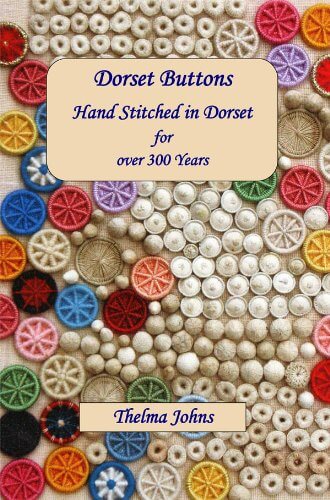 A little bit more about the history of the Dorset Button: In the 16th century fasteners grew more complicated than tapes or loops and ropes. Buttons became a must have decorative element on clothing for the rich and they were used almost to excess by the 17th century. Instead of wood, bone or horn, Dorset buttons were wrapped with fine thread and were less likely to snag expensive fabrics like silk.
A little bit more about the history of the Dorset Button: In the 16th century fasteners grew more complicated than tapes or loops and ropes. Buttons became a must have decorative element on clothing for the rich and they were used almost to excess by the 17th century. Instead of wood, bone or horn, Dorset buttons were wrapped with fine thread and were less likely to snag expensive fabrics like silk.
The button making business became a cottage industry and supported entire villages until the Industrial Revolution. There were people who made the buttons and were paid by the piece and others who supplied materials or delivered the completed buttons. The book shown here (which seems to be out of print now) was written to preserve the history of the craft and details the making of a couple styles. I found it interesting but it’s a history with an appendix of how to make the buttons rather than a handbook.
To my mind, there are intriguing parallels between the cottage industries of the 17th and 18th centuries and the rise of internet commerce and the blogging industry today…topics for another post.

Modern interpretations of Dorset Buttons are more decorative and draw on folk patterns from other cultures. You can see some of the patterns in this screengrab of a Pinterest board dedicated to the craft which is enjoying a resurgence along with other needle and weaving crafts.
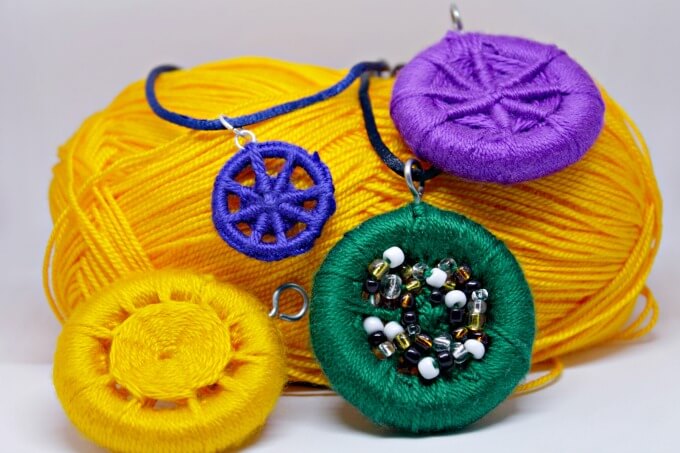
To make your own Dorset Buttons you’ll need:
- Rings of various sizes (I used curtain rings and split rings)
- Embroidery thread or fine yarn (I used a fine cotton yarn but feel crochet or embroidery thread is better for the more elaborate Dorset buttons)
- Needle suited for the type of thread or yarn to be used
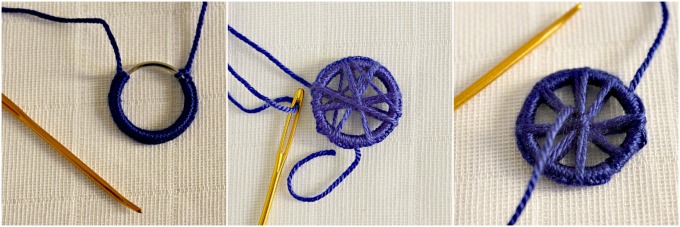
Step one: Measure a length of thread (between 10 and 15 feet for a 3/4″ split ring) and begin to wrap the outside using a blanket stitch. The thread can be doubled to make the length easier to handle. This is called casting. When the ring is covered you can push the ridge formed by the blanket stitch to the center or leave it as I did.
Step two: Wrap the ring to create between 6 to 12 spokes. It will look like a hot mess but don’t worry.
Step three: Use the needle and a simple cross stitch to organize the wraps into spokes. You can use the tip of the needle to move the threads around the ring if necessary.
Step four: Use the remaining length of thread to weave around the spokes in a pleasing pattern. You can change colors and add beads. Unlike the beaded crochet bracelets I made, it’s better to add the beads after the button has been wrapped and centered. Secure your ends with a spot of glue or clear nail polish. Add a jump ring and some cord and you’ll have a custom made pendant to go with your new dress, or something to add to a key fob.
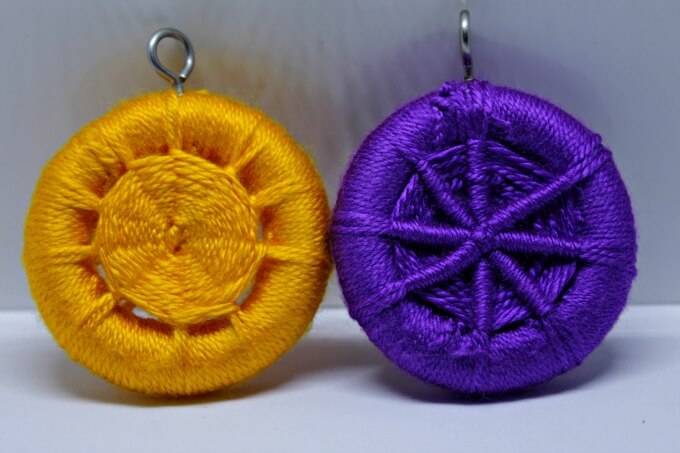
There are actually two sets of threads available for weaving, a front and a back. For the smaller and thinner buttons they can be worked as one unit but for the buttons worked on a curtain ring you can work with only the front group. In the photo above the two patterns are the same stitch worked in different ways. The one on the left is more like a weave with the needle wrapping the spokes from the top. The pattern on the right is called a Wheel and the spokes are wrapped from underneath.
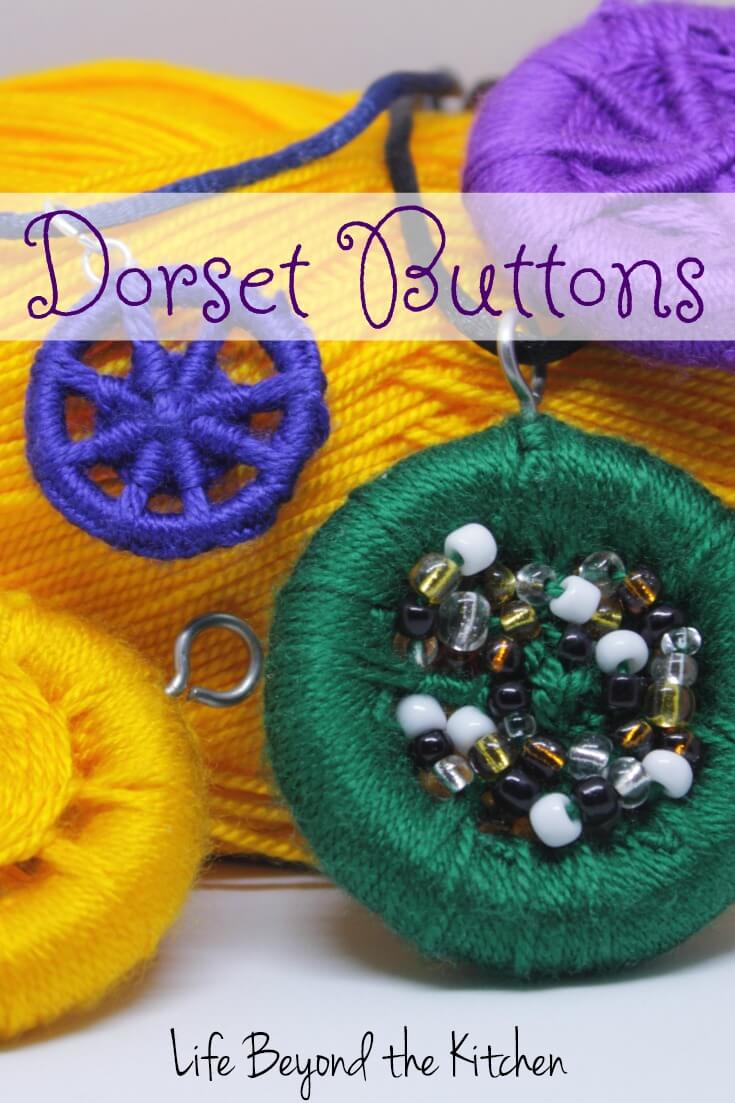
More information on Dorset Buttons
I can just see a pretty set of dorset buttons added to a sweater coat, but there doesn’t seem to be a ton of information. Amazon has a few books listed, but not many.
I did come across a class offering on Interweave.
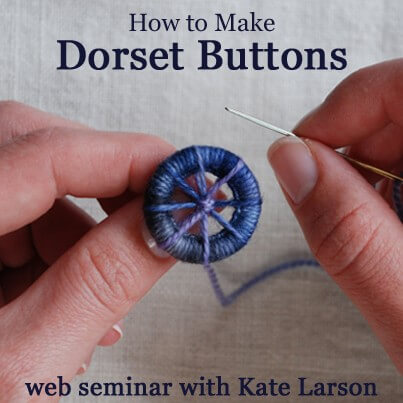
You will find more information and inspiration at Henry’s Button Blog and on YouTube (not all of these videos are in English but you can follow along). This is one of the better videos as the maker is creating buttons for a costume.
UPDATE 2020: I came across Jen Best’s work online and ordered one of her books from her website Beaker Buttons. In addition to books she sells kits and patterns for other projects. I bought the Beaded Dorset Button book and was able to pay through PayPal (they take care of the currency exchange) and was sent a link to download the book via email. I’m excited to try some of her beaded patterns.
I’ll link to more resources as I come across them.
I’m amazed at this craft and the elaborate results some of the crafters have been able to achieve. I’m really inspired to learn more about needle weaving and lace making…and I have plenty of materials in my stash to work with!
This post was updated from the original which was published in 2017 and part of a Craft Room Destash Blogging challenge I was participating in at the time.
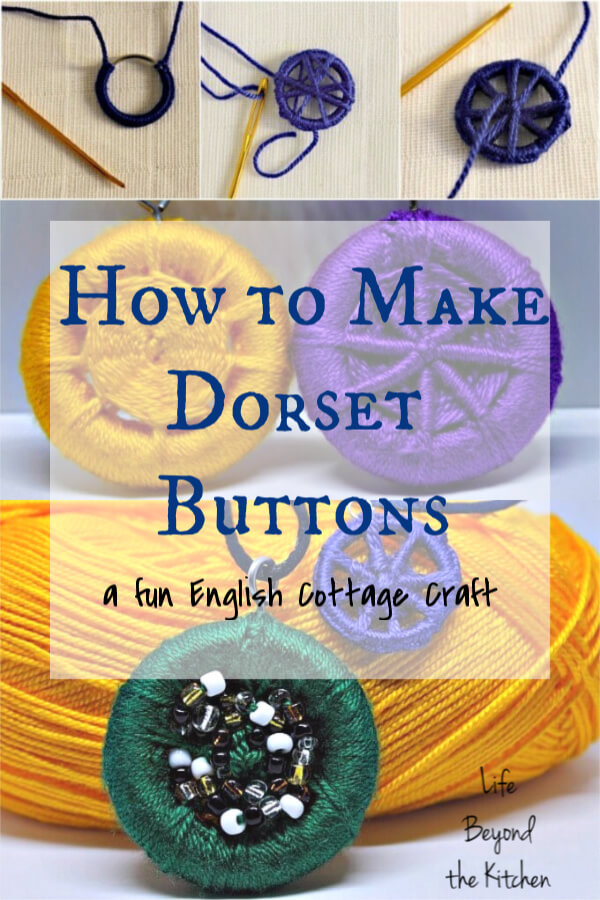
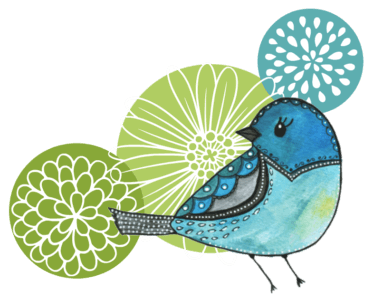
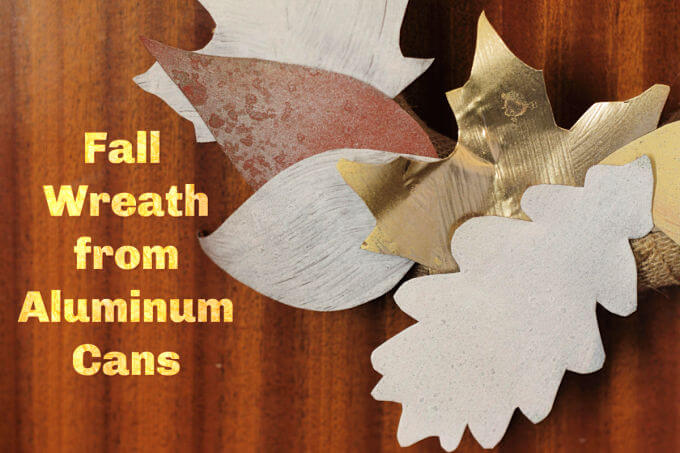

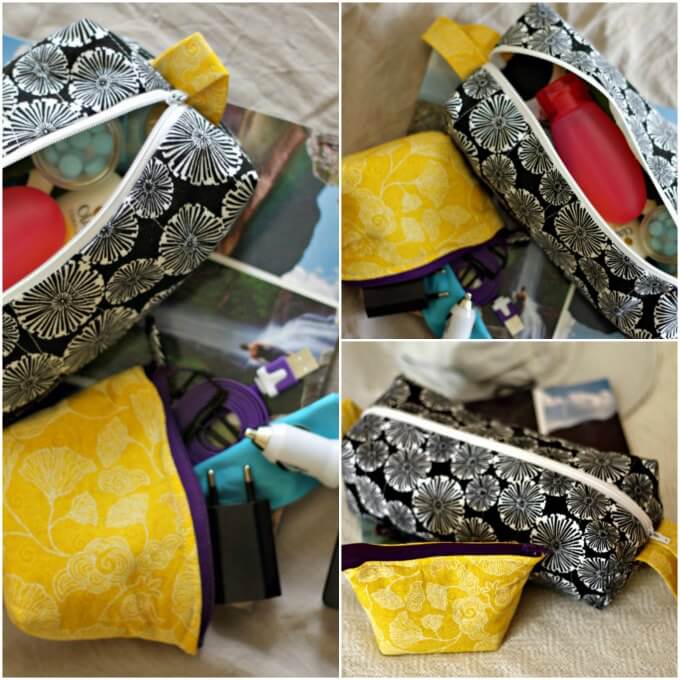
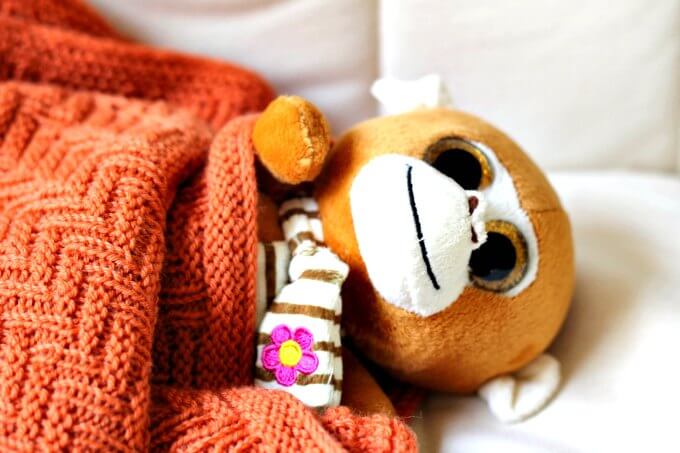
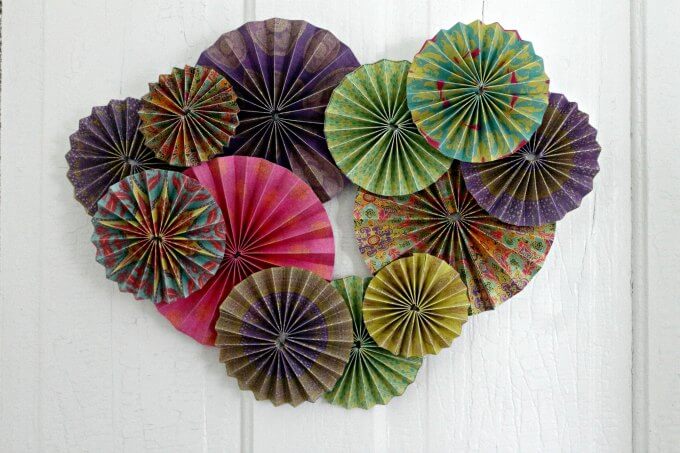
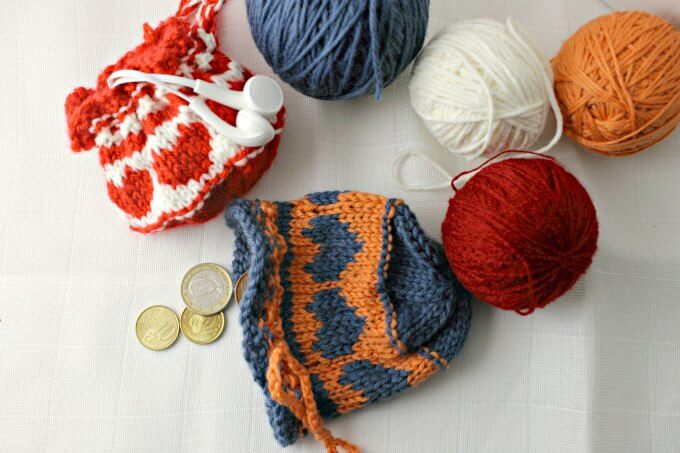
How interesting! I love having the history with the craft. I’m imagining a small frame filled with these or a hanging mobile. So neat!
I think they’re pretty cool as well. Hope you get a chance to look around the web to see all of the possibilities 🙂
I haven’t heard of “Dorset Buttons” before, but it was an interesting history and a fascinating craft. I love it when “new” crafts are coming around again from days gone by. I’m not sure what blanket stitch is, but I would like to make some of these. They are so pretty, and I have a lot of those supplies on hand.
Having the supplies on hand is a big plus! I’ve linked to several YouTube videos which go into more detail how to make the buttons, including how to do the blanket stitch. It’s the one where you bring the needle through the loop formed by the thread and may be called something else. Hope this helps! 🙂
How interesting. I love history. This would be a great craft to learn while watching TV at night or listening to podcasts. Thanks for sharing.
I have to admit the TV is on mostly for background noise. I’m usually crafting or putzing around online. Thanks!
This is so fascinating. I can’t get over how intricate it is. I don’t know why but it made me think of tatting. My aunt used to do it. Do you do that craft also?
I haven’t tried it, but I have a friend who does gorgeous work. Like you I’m amazed at the intricacy.
What an interesting post! Thank you for the little trip into history. I think it is so important to share knowledge so that these old crafts don’t get lost!
I agree and I love how modern crafters put a contemporary spin on them and make them “new” all over again.
What an interesting craft. I have never heard of dorset buttons before but the story of them was a really interesting read. Women making money and working from home, somethings remain. Loved the story.
Thanks! I’m interested in exploring the possibilities of Dorset buttons further.
How cool to engage in a historical craft. Your examples would be a lovely art addition and topic of conversation to any outfit.
Thanks for the links so that I, too, may learn about them.
It was a lot of fun. I’m looking at the really find crochet thread with a different eye, now. 🙂
I’ve never heard of dorset buttons, but they are so cute! I love how yours turned out.
Wow, I think I’ve seen these before, but didn’t know what they were called or the history! Really neat.
I hope you get a chance to look at the other links to see all of the possibilities.
That is so cool! I love history, and how neat that you were able to recreate them in so many styles!
I loved this post. The history of the buttons is fascinating. I didn’t even know something like this existed but can’t wait to go explore more about them.
Have fun! Pinterest seems to be the best bet, but you never know when you might come across an old craft book or magazine with some info.